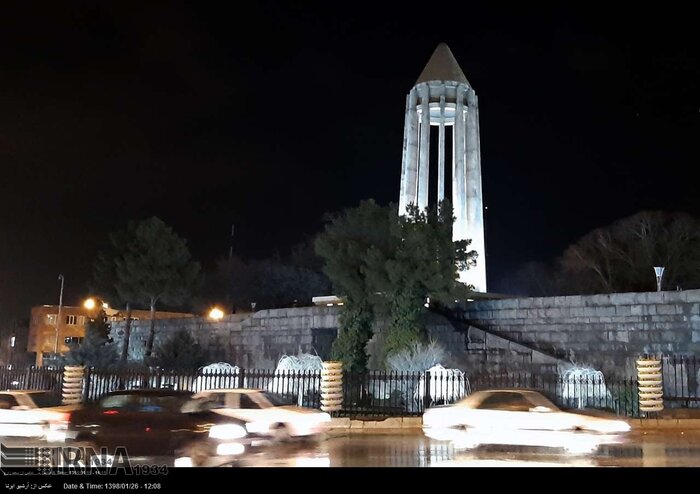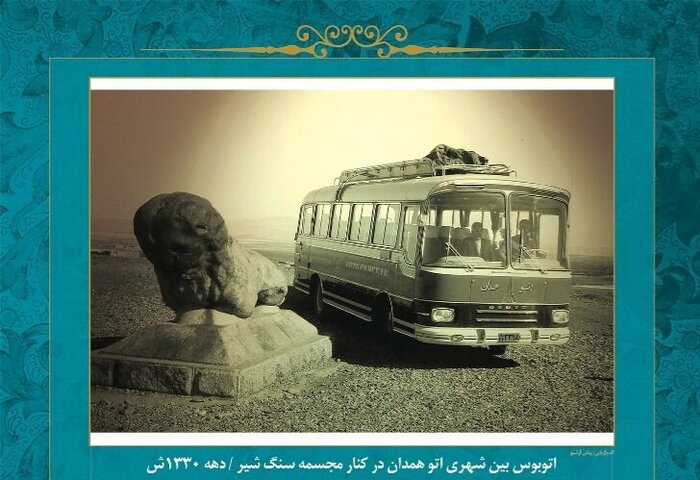
Abu Ali Sina is known as one of the greatest doctors, philosophers, astronomers and writers of history, and the period of research and activity of this scientist is known as the Golden Age of Islam.

He is also called the father of modern medical science, because he excelled in medicine, mathematics, philosophy, and astronomy, and because of his expertise in medicine, the famous Iranian scientist and doctor was named as the doctor of the day on his birthday.
He studied the Quran and other sciences in Balkh and benefited from the presence of Ustad Abdallah Natali. At the age of 18, he learned all the sciences and at the age of 21, he began to compose and wrote a collection called "Results and Products" in 10 volumes. He wrote 2 books, one on ethics titled "Albar and Alaem" and another on philosophy called "Prosodic Wisdom" in 21 volumes.
Abu Ali Sina has about 450 books and articles, 240 of which have been preserved, among which 150 are about philosophy and 40 are about medical science. Book healing As an encyclopedia of science and philosophy as well as a book Law As an encyclopedia of medical science, they are valuable relics of this great scientist.
The book of law is known as an educational reference in many medical universities of the world, which was taught in many prestigious universities of the world until 1650 AD.
In addition to philosophy and medicine, Ibn Sina wrote articles in various other sciences such as astronomy, chemistry, geography, geology, psychology, theology, logic, mathematics, physics, and even literature and poetry.
This scientist showed his interest in various sciences at an early age and by studying various sources, he also learned Indian mathematics and Islamic sciences such as jurisprudence. The books of Euclid's Principles, Porphyry's Introduction and Al-Majisti written by Ptolemy are among the works that Ibn Sina studied in his childhood under the tutelage of various teachers.
As a teenager, Ibn Sina studied the topics of Aristotle's metaphysics (metaphysics) and many questions about this science formed in his mind. After reading Farabi's ideas about this book, he found the answers to many of his questions. After that, he became interested in studying philosophy, and as he studied more, his questions increased.
After the death of the father; Due to his strong memory and genius, Bu Ali became the caretaker of his father's job and also gained great skill in medicine, but after some time, due to the disorder of the political situation, he left Bukhara for Gurganj. His minister, Abul Hossein Ahmed bin Muhammad Sohaili, who supported intellectuals, left.
At this time, with Mahmud of Ghaznavi's attack on Khwarezm and his control over this land, the scholars of that land were asked to go to Ghaznin and serve Sultan Mahmud. Ibn Sina did not accept this invitation and had to leave Khwarazm.
He went to Jurjan (today's Gorgan) and started writing the book "Law" in this city. Abu Ali Sina came from Gorgan to Ray and then to Qazvin and from there to Hamadan and stayed in this city for 9 years.
There, he was noticed by Shams al-Dawlah Deilami and was appointed as a minister, and at the same time as handling political affairs, he also devoted himself to writing the book "Healing". After the death of Shams al-Dawlah, his son Sama al-Dawlah took his place and asked Abu Ali Sina to accept the ministry, but when he faced the Sheikh's negative answer, he imprisoned him for four months.
In prison, Ibn Sina wrote a treatise called "Hay bin Yaqzan" in relation to mysticism, a book called "Qulanj" in the field of medicine and several other treatises.
After being released from prison, he secretly went to Isfahan with his student, Abu Obeid Jozjani and his brother. In that country, when he met with the warm welcome of the ruler of Isfahan, Alaa al-Dawlah Kakuye, he decided to stay in that city.
He finished his unfinished books in that city and wrote new books on philosophy, mathematics and music.
Ibn Sina also had a special expertise in Greek philosophy because he combined Aristotle's philosophy with the views of Alexandrian commentators and Neo-Platonist philosophy, and with his special genius he adapted them to the monotheistic view of Islam, and in this way, he brought discussions in the philosophy of Masha'i that originally Greek had no history of it.
Ibn Sina left a lot of works, among which we can mention Law, Healing, Al-Mukhasara al-Awsat, Al-Mubada wa Al-Ma'ad, Al-Hidaya, Al-Dawiya al-Qalbiyyah, Najat, Some of the Hikma Al-Mashrakiya, Al-Hashil and Al-Mashul, Al-Alai Encyclopaedia and References. With the beginning of the translation movement in the 12th century AD, Ibn Sina's law book was translated into English, French and German, which was used as a reference by doctors in major universities of the world until about two centuries ago and has been translated into most languages of the world. With the attack of Masoud, the son of Sultan Mahmud of Ghaznavi, on Isfahan and the occupation of this city, Alaa al-Dawlah left Isfahan with his troops and moved towards Hamedan. Abu Ali Sina was also with him on this trip, and he fell ill on the way.
Abu Ali Sina due to this disease, on the 8th of Aban 415 AH equal to the first of Ramadan 428 AH when he was 58 years old, he said goodbye to Darfani and was buried in the city of Hamadan, but his memory will remain forever in the memory of the people. This land is closed.

Held Hakim Hazara conference in Hamadan
The conference of the sage of the Hazaras "Sheikh al-Rais Bu Ali Sina" will be held in Hamadan today and at the same time as the birthday of this Islamic world thinker with the presence of Ibn Sinapzohan.
Trust your property The Head of Public Relations and International Affairs of Bo Ali Sina Foundation said: In this conference, expert professors in the field of Sinavi philosophy and wisdom from Tehran and Hamedan will read their articles about Sinavi heritage.
He added: This conference will be held with the participation of the Bu Ali Sina Scientific and Cultural Foundation, the Association of Cultural Artifacts and Cultural Honors, and the General Directorate of Culture and Islamic Guidance of Hamedan, and with the cooperation of the cultural and executive bodies of Hamedan province, in Fajr Hall of the Municipality, located in the Bu Ali Mausoleum Square, and participation is open to the public. Is.
Referring to the closure of commemoration rituals and Sinavi conferences in the past 2 years due to the spread of the corona virus, Darai said: Considering that this year, due to the spread of the virus, we could not hold a national or international conference, it was enough to hold this scientific ritual. And we hope that conditions will be provided that, with the support of the Ministries of Culture and Islamic Guidance, Science and Hamedan Governorate, next year, an international or national conference will be held with a call for papers to discuss and investigate the legacy of Sheikh Al-Raees.
He also said about the content of the articles presented in this conference and the invited speakers: Dr. Hassan Balkhari, the head of the Association of Cultural Artifacts and Masters, wrote an article entitled "If justice did not burn!" And Dr. Najafaqli Habibi, the proofreader of the Law Book, will also read a report about the scientific-critical correction of the third book of the Law.

The history of Hamedan in the frame of the show
The Director of Documents and National Library of the Western Region of the country also announced the holding of an exhibition of historical documents and photos in Hamedan and said: Simultaneously with the first of Shahrivar, Ibn Sina's birthday and Hamedan's Doctor's Day, we are witnessing the implementation of this cultural event.
Covenant of Godarzi He said: In this exhibition, 80 titles of historical documents and photographs from the end of the Qajar period to the 1360s with various cultural and social issues will be exposed to the eyes of the interested people in the form of real and virtual exhibitions.
He added: This exhibition will be held and displayed on the sidelines of the commemoration ceremony of Ibn Sina and the first day of Hamedan week, which will be held and displayed with the presence of national and local officials, and it will also be available to those interested through virtual space.
The history of Hamedan is depicted in the frame of the show
Gudarzi pointed out: Referring to the medical history of Hamedan, the construction process of Ibn Sina's mausoleum, introduction of noblemen and personalities, as well as introducing the customs and lifestyle of the people of Hamedan in the previous decades are among the topics of this exhibition.
Source
https://www.globalcourant.com/the-first-of-shahrivar-the-day-of-hamedan-and-the-famous-doctor-of-the-previous-millennium/?feed_id=14573&_unique_id=630475551b1d1

إرسال تعليق